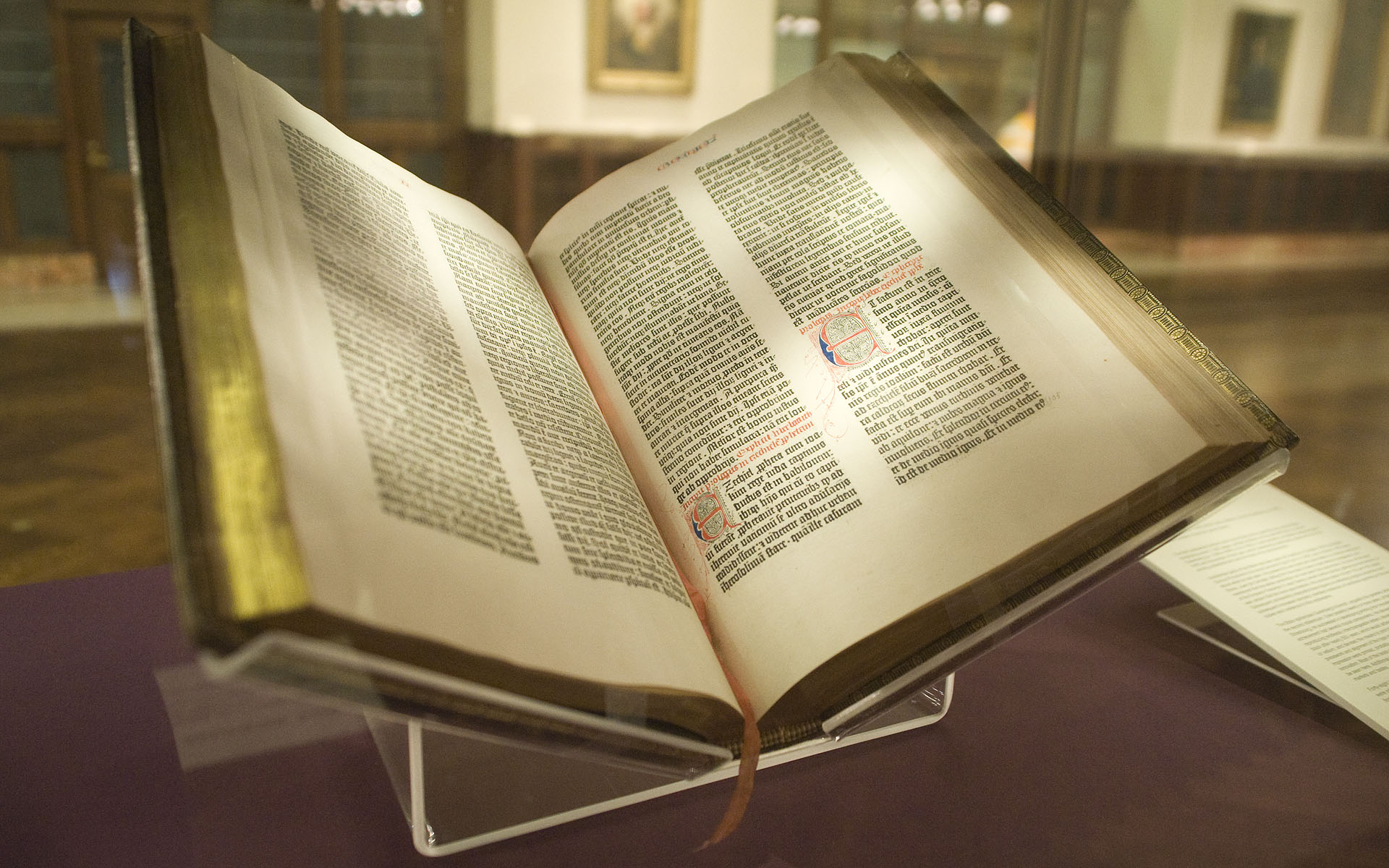Johannes Gutenberg's work on the printing
press began in approximately 1436. Having previously worked as a professional goldsmith, Gutenberg made
skillful use of the knowledge of metals he had learned as a craftsman. He was
the first to make type from an alloy of lead, tin and antimony, which was
critical for producing durable type that produced high-quality printed books
and proved to be much better suited for printing than all other known
materials. To create these lead types, Gutenberg used what is considered one of
his most ingenious inventions, a special matrix enabling the quick
and precise molding of new type blocks from a uniform template. His type
case is estimated to have contained around 290 separate letter boxes, most
of which were required for special characters, punctuation marks, etc.

If you want to see how Gutenberg's printing press works, watch this video:
The Bible was the first book printed by Gutenberg with movable types in the west and the first major book produced on a printing press anywhere in the world.

